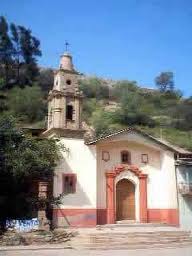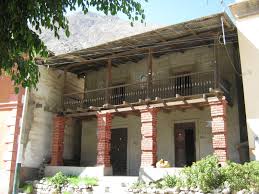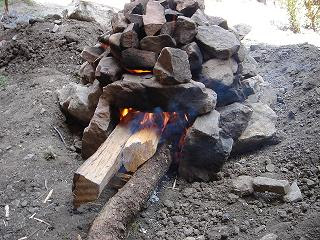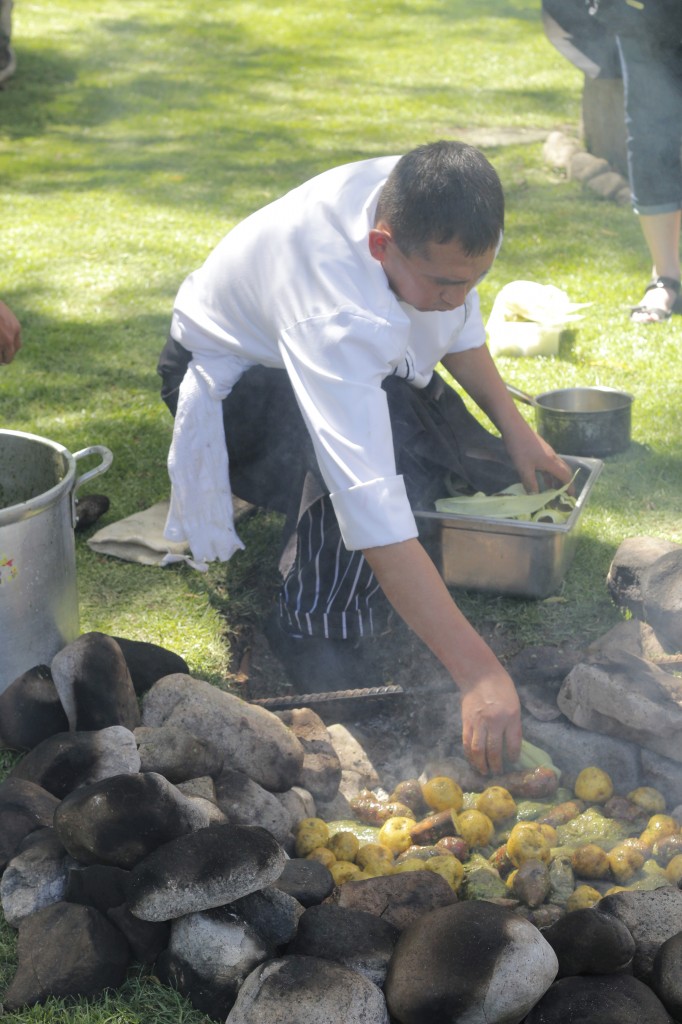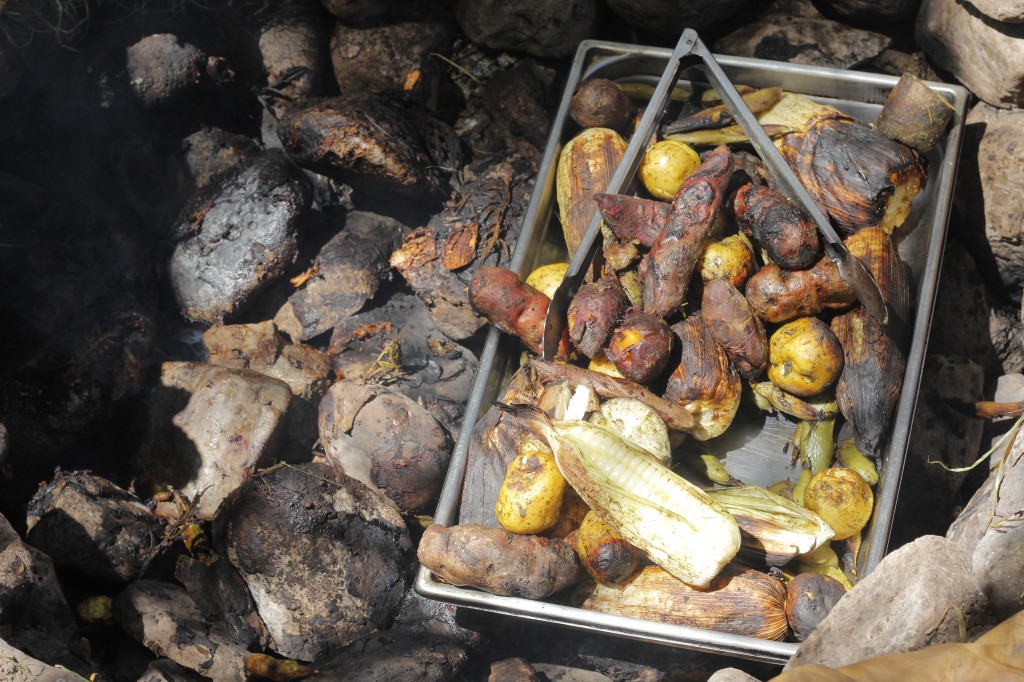I was born in Lima but my parents come from Canta, a province which is only a couple of hours away from Lima by car. My childhood was spent between the busy city of Lima and my grandparent’s house in Yaso, a tiny town in the Chillon valley close to Santa Rosa de Quives, home to Lima’s very own Saint Rosa de Lima. Santa Rosa de Quives is a larger town and famous as part of the pilgrimage made by dozens of Catholics to pay homage to Saint Rosa de Lima. Yaso is located on the highway on the way to Canta. This small town is also known as the ‘town of 100 balconies’ as most houses feature balconies.
It is in these beautiful surroundings with stunning mountains as a backdrop and the Chillon river nearby where myself and my cousins used to swim, play and enjoy different festivities. It was here where I learned how my relatives cooked the famous Pachamanca dish.
This dish dates back to pre-Hispanic times, ‘Pacha’ in Quechua means earth and ‘manca’ means cooking pot; in short pachamanca is a dish buried under ground and cooked over very hot stones, the flavour of the meat and vegetables obtained from the warm earth combined with the special seasoning is really out of this world! The smell alone whilst the meat is cooking certainly whets your appetite.
The first task is to dig a hole in the ground and collect the stones from a nearby river, we used to do this in my grandfather’s farm so our job was to carry these stones (we picked the ones which are heat resistant). Then we stacked them like a pyramid which were heated by a wood fire for a couple of hours until they were very hot. When the hole was ready, we placed banana leaves to cover the soil on the side. We then placed the hot stones underneath and on top of the stones carefully place a layer of potatoes. It is then advisable to put more hot stones and cover with banana fronds, then place the meat of your choice properly seasoned (it can be beef, pork, lamb or chicken) top with another layer of hot stones and cover it with more banana fronds, add more potatoes and sweet potatoes, corn and humitas. Finally cover the top layer with banana fronds and sacks of damp cloth adding soil on top of it. The aim is to make it airtight and seal the hole and prevent any steam or smoke from escaping. A cross is placed right in the middle of this burial and the approximate cooking time is a couple of hours.
While you wait for the dish to be ready, there is a fair amount of alcohol consumed, either beer or chicha (corn beer) to boost everyone’s spirits. Sometimes a band of musicians joins in to heighten the festivities followed by a great deal of dancing and enjoyment. Once ready, you remove all the layers carefully and serve the meat and vegetables on plates. Peruvian gastronomy is becoming very famous all over the world because it’s varied and vast, but eating Pachamanca will transport you back to the core of the Andean cultures. While visiting Peru, it is worth asking your guide for a restaurant where you can try Pachamanca, which is now cooked up in most places across the country with small regional variations.
Buen Provecho!
Elena Larkin
Sunvil Traveller
